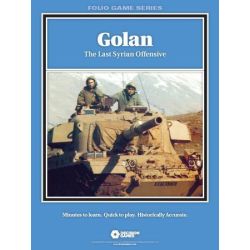

Por encomenda


ARTIGO POR ENCOMENDA
Compra este artigo e iremos encomendá-lo exclusivamente para ti, ao fornecedor. O tempo estimado de chegada ao nosso armazém pode ir de 1 semana até 2 meses.
Uma encomenda que contenha pelo menos um artigo "Por Encomenda" apenas será enviada quando estiver completa, pois pressupõe apenas um envio.
Para receberes já outros artigos que temos em stock recomendamos fazeres uma encomenda separada.
Editora Decision Games
Idioma

Dependência de idioma (0-4) 2. Média
Nº Jogadores 2
Duração De 30 a 60 minutos
Autor Eric R. Harvey, Irad B. Hardy
Idade Mínima 12
Temas Modern Warfare, Wargame
Mecânicas Hexagon Grid, Simulation
